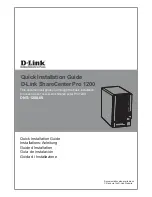
Getting to Know Your Wireless Router
7
you have finished, you will be Internet ready! If you have a Linux system, you need to use the
manual installation method (see
“Manually Installing Your Router” on page 12
).
You can set up your N300 Wireless router using one of two methods:
•
Smart Wizard Setup
: The Smart Wizard setup is available on your
Resource CD
. See
“Installing Your Router Using the Smart Wizard” on page 9
to use the Smart Wizard.
This is the easiest option. The wizard guides you through the setup process. It automates many
of the steps and verifies that the steps have been successfully completed.
•
Manual Setup
: If you cannot or prefer not to use the Smart Wizard, see
“Manually Installing
Your Router” on page 12
. For example, if you are using a Linux operating system, or are
technically knowledgeable, select this option. If you choose to use this option and install your
router manually, for best results, install and set up your router in this order:
1. Install and connect your wireless router to your network (see
“Connecting Your N300
Wireless Gigabit Router” on page 13
).
2. Set up your wireless router for Internet access (see
“Setting Up Your Router for Internet
Access” on page 18
).
3. Configure your wireless network and select wireless security settings to protect your
wireless network (see
“Configuring Your Wireless Network” on page 22
).
Updating Your Router Firmware
NETGEAR is always improving the operability and features included with your router. To make it
easy for you to receive the best, most up-to-date features of your router, NETGEAR provides a
variety of methods for updating your product.
•
The Smart Wizard lets you check for and install updates as part of the setup activity (see
“Using the Smart Wizard” on page 9
).
NETGEAR does not recommend or support adding a NETGEAR router behind
another router, or replacing a gateway with a a NETGEAR router.
Before running the Smart Wizard on a corporate PC to set up your home
router, check with your company’s network support staff. Corporate
network settings or Virtual Private Network (VPN) client software might
conflict with the default settings of a home router. If you are unsure about
whether there might be a conflict, use a different computer.












































